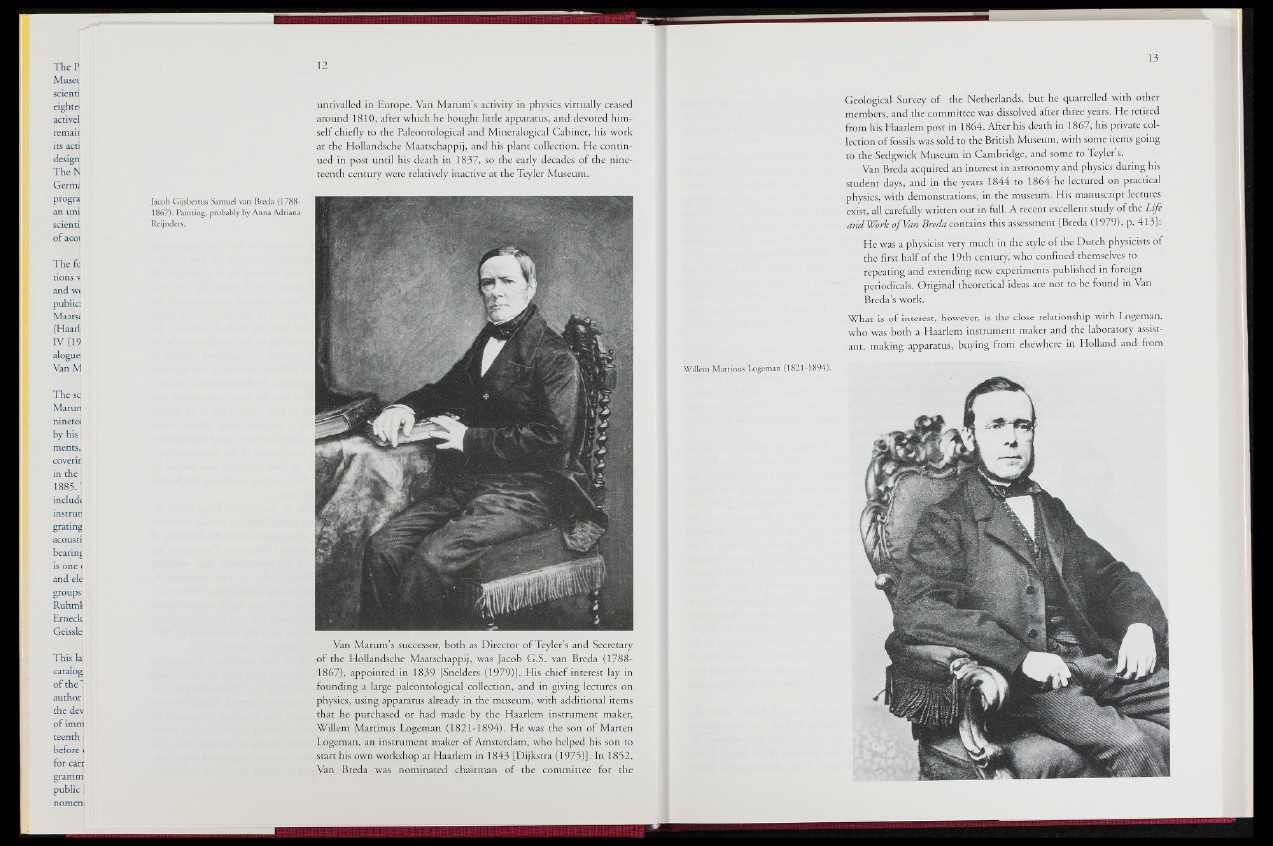
TheP
Musei
scienti
eightet
activel
remaii
its acti
design
TheN
Germi
progra
an uni
scienti
of acoi
The fo
tions v
and w<
public
Maats<
(Haarl
IV (19
alogue
Van M
The sc
Marun
ninetei
by his
ments,
coverir
in th e .
1885/
includi
instrun
grating
acousti
bearing
is one (
and eie
groups
Ruhml
Erneck
Geissle
This la-
catalog
of the ^
author
the dev
of imm
teenth ■
before <
for cari
grammi
public i
nomem
unrivalled in Europe. Van Marum's activity in physics virtually ceased
around 1810, after which he bought little apparatus, and devoted himself
chiefly to the Paleontological and Mineralogical Cabinet, his work
at the Hollandsche Maatschappij, and his plant collection. He continued
in post until his death in 1837, so the early decades of the nineteenth
century were relatively inactive at the Teyler Museum.
Van Marum's successor, both as Director of Teyler's and Secretary
of the Hollandsche Maatschappij, was Jacob G.S. van Breda (1788-
1867), appointed in 1839 [Snelders (1979)]. His chief interest lay in
founding a large paleontological collection, and in giving lectures on
physics, using apparatus already in the museum, with additional items
that he purchased or had made by the Haarlem instrument maker,
Willem Martinus Logeman (1821-1894). He was the son of Marten
Logeman, an instrument maker of Amsterdam, who helped his son to
start his own workshop at Haarlem in 1843 [Dijkstra (1975)]. In 1852,
Van Breda was nominated chairman of the committee for the
Jacob Gijsbertus Samuel van Breda (1788-
1867). Painting, probably by Anna Adriana
Reijnders.
Willem Martinus Logeman (1821-1894).
Geological Survey of the Netherlands, but he quarrelled with other
members, and the committee was dissolved after three years. He retired
from his Haarlem post in 1864. After his death in 1867, his private collection
of fossils was sold to the British Museum, with some items going
to the Sedgwick Museum in Cambridge, and some to Teyler's.
Van Breda acquired an interest in astronomy and physics during his
student days, and in the years 1844 to 1864 he lectured on practical
physics, with demonstrations, in the museum. His manuscript lectures
exist, all carefully written out in full. A recent excellent study of the Life
and Work ofVan Breda contains this assessment [Breda (1979), p. 413]:
He was a physicist very much in the style of the Dutch physicists of
the first half of the 19th century, who confined themselves to
repeating and extending new experiments published in foreign
periodicals. Original theoretical ideas are not to be found in Van
Breda's work.
What is- of interest, however, is the close relationship with Logeman,
who was both a Haarlem instrument maker and the laboratory assistant,
making apparatus, buying from elsewhere in Holland and from